If I just give you high strung praises,tips and the recipe for this great pickle I should reconsider my move as I have not given you everything relating to this absolutely divine tasting accompaniment.There are thousands of recipes on the Internet for this pickle and maybe some are better than mine,but I want to make people realise the history of pickling in South India and how the methods evolved over years – and practically made these pickles a luxury that they can be available all round the year in sealed plastic poly packs compared to a necessity in days long gone when they were made only during the Mango season!
Mango is one fruit which Indians have really experimented with and made more than 50,000 preparations with(there would be more) and they use both Raw and Ripe Mangoes for these preparations as per the recipe.In the month of March,regions from Maharashtra to the southern parts of India,people can feast their eyes on Mango trees as they would have flowered in February and now would hang bunches of small deep green baby Mangoes which might be plucked immediately by eager and impatient Mango lovers who wish to revel in sour Mangoes or they would be left to mature and ripen by the more patient ones who love to have the ripe and sweet juice drip down their throat!
In the early days when there was no refrigeration,no storage facilities and the heat which caused the fruit to rot easily and quickly,a lot of culinary experts felt the need for preserving these unripe Mangoes.They foresaw that due to Mango being a seasonal fruit available only during the blazing summers,it was loved by all,cherished by all but not able to have a sustainable shelf life.These “experts” were no Chefs or trained cooking professionals,but our female ancestors – those women who were relegated to the kitchen and intentionally or otherwise had no choice except to keep on cooking from ethereal morning breakfasts,to elaborate lunches,tasty tea times and filling dinners.In this blog if you see the section “About Us”,I have given details of all the culinary experts in my family who fitted into the above category.However this pickle was invented even before them and once I remember my grandmother telling me that it was invented maybe in the early 1800’s when South Indians had no choice against the merciless summers when the temperature reached above 40°C and ate only “curd-rice” to cool off.
Now let us see what curd-rice actually is.In simple terms its plain Yogurt mixed with plain steamed or boiled rice.The consistency depends on the person in question.Some want to have it thick while others want yogurt in plenty.Still others pour some water over the yogurt to “soak” the rice in the liquid and take a small amount of pickle which is then mixed with the rice and Yogurt and eaten with hands.South Indians delight in scooping the rice with the Yogurt into their fists and perform a “half eating half drinking” action which seems a little weird to Indians from other parts and people from other countries.However in South India this was regarded as a common practice and they enjoy this meal as a must do session everyday!
I was not bought up in South India and I was born during a time when modern Indian parents educated their children on table manners,etiquettes and a zillion do’s and dont’s!In my childhood when I went to my native place,I was fascinated seeing the peoples’ rustic manners,their easy going attitude and the ease with which my great grandma prepared and served food for more than 20 people without getting tired,proactively switching between the kitchen and dining area asking people if they needed anything,preparing for meals beforehand and of course that her meals were out of this world every time I sat down to eat.We as kids were served first,then the men and then the women of the family.As a kid I thought that such trips would be made often and we would enjoy being together.Later I realised that nothing is permanent – neither times,nor people and I now feel almost alone sometimes thinking of those halcyon days!However we need to live our lives for others following their example and so this blog!
I had this pickle in my childhood and I was surprised at a whole small Raw Mango put on my plate.I licked it and at once all the tastebuds rang at the various spices and flavours this pickle had acquired.My grand mother told me that this was made with a special variety of baby Mangoes which were “dwarfs” in the many varieties in India.I went shopping for the Kerala New Year or Vishu and was amazed to see the varieties of Mangoes available for pickling!Here is the wonderful pic!
The many varieties of Mangoes for pickling in all shapes and sizes at the market in Matunga,Mumbai!
So for Vadu Mangai we buy baby Mangoes and proceed with the pickle thenceforth.Going back to history,this is a sure shot method of preserving these lovely baby Mangoes.In another of my grand mother’s teachings I came to know that baby Mangoes have a very short season as they rot very soon.So we need to pickle them as fast as we can and then they would stay for over 2 years if handled properly.So let us introduce the baby Mangoes :
The Baby Mangoes – they are “dwarfs” compared to other varieties!
So let us talk about the pickle now!In South India,people consume rice more than any other grain.The coastal regions are very hot,sultry and humid and so people stick to yogurt as a means of cooling the body.The purpose of this pickle is to preserve the Mangoes and we add a mix of delicious spices to it which “sucks out” the juices from the Mangoes and this juice combines with the spices and 3-4 days later the Mangoes float in a spicy liquid sea which will be further absorbed by them.Their skins will shrivel as the moisture is absorbed and the pickle would taste just great.
Let us first take a look at the tips for making this pickle :
- Use firm(not soft) Mangoes with no black spots on them.There may be some external spots which can be easily washed away but the skin of the mangoes should be clean.
- Use freshly powdered spices.Make the pickle the same day you powder the spices or the aroma would be lost.
- Use Sesame Oil for coating the Mangoes.You can use refined Oil but will not get the same taste as Sesame Oil.
- Use Kashmiri Chilli Powder if possible as it is very mild and gives a beautiful red colour to the pickle.People wanting spice can use Everest Tikhalal or roast and powder red chillies at home.Those who can get hold of Guntur Chilli Powder(exclusively available in Andhra Pradesh and Telangana) are the lucky ones as the powder is a little extra spicy,wonderfully fragrant and having a beautiful Orange colour!
- Make the pickle preferably as soon as you buy the Mangoes.Never store them in the refrigerator and make the pickle within 2 days.
- Make the pickle in a big clean glass jar.You can use a ceramic jar as well with a well fitting lid.Do not keep the pickle exposed to air.
- After a week be sure to refrigerate the pickle otherwise especially in humid areas the pickle may develop a mould.
- I have used Lemon Juice and Vinegar both in the spice mix.I stay in a coastal,humid area and the damp air spoils these kind of pickles quickly so these natural preservatives are essential.
- Please use boiled and cooled water.If it is even slightly warm it may cause condensation and spoil the pickle.
Now let us start with the recipe!
The paraphernalia..
Preparation Time : 2 hours
Makes : Approximately 2 1/2 kg of pickle
INGREDIENTS
1 1/2 kg baby Mangoes
1/2 cup Sesame Oil
For the spice mix:
1 cup Black Mustard Seeds(rai)
1/4 cup Fenugreek Seeds(methi dana)
1 cup Salt
1 cup Kashmiri Chilli Powder/your choice
2 tbsp Asafoetida(Heeng)
Other ingredients :
Juice of 3 limes
1/4 cup vinegar
1/3 cup (boiled and cooled to room temperature) water
METHOD
Prepare the Mangoes :
Prepare a big glass jar by washing it with hot water and soap and putting it out in the Sun to dry.Wash the Mangoes and remove any stems.Individually wipe each Mango and place them on a kitchen towel or cloth on the ground or on a table – preferably a dining table.let them dry overnight.Next day wipe each Mango individually again and keep putting them into the glass jar.
After all the Mangoes are in,add the Oil and mix well so as to coat each Mango with the Oil.Keep aside and prepare the spice mix.
Coating the Mangoes with Oil
Preparing the Spice paste :
Dry roast sesame and fenugreek seeds individually.Cool to room temperature and grind to a fine powder.Now add red chilli powder,salt and asafoetida to this and grind again till fully mixed.Add lime juice,vinegar and water and combine to make a thick paste.
The paste..
Preparing the Pickle :
With a spatula or hands,spread the prepared paste on the oiled Mangoes.Be sure that each Mango is coated Spread some paste on top and close the lid tightly.
How the Pickle looks over time :
After 1 day
Notice how the skin is shrivelled and wrinkled which means that the spices have drawn the natural Mango juices to make the pickle even more tasty!
After 4 days
After a week refrigerate the pickle.If you have used a large jar which foes not fit inside the refrigerator,fill the pickle inside clean pickle jars and close tightly.Refrigerate for a month before using.I do not have patience and tried some with the traditional “curd-rice”!Here is the pic :
Serving with “curd-rice”

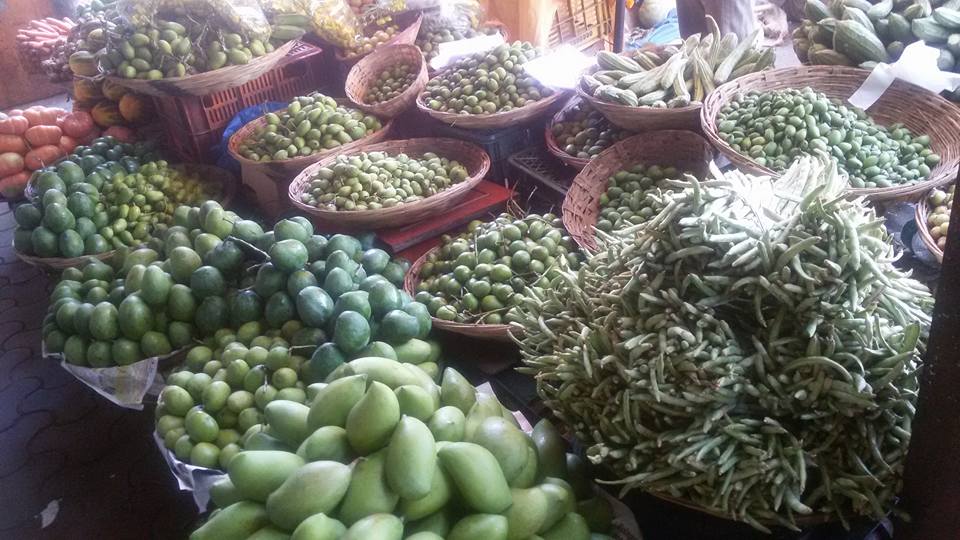













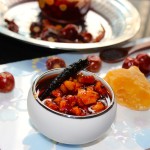
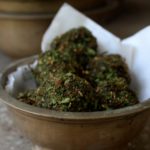
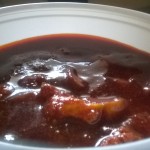
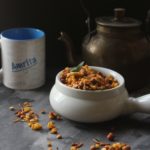
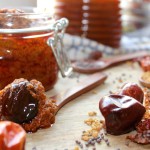
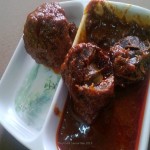









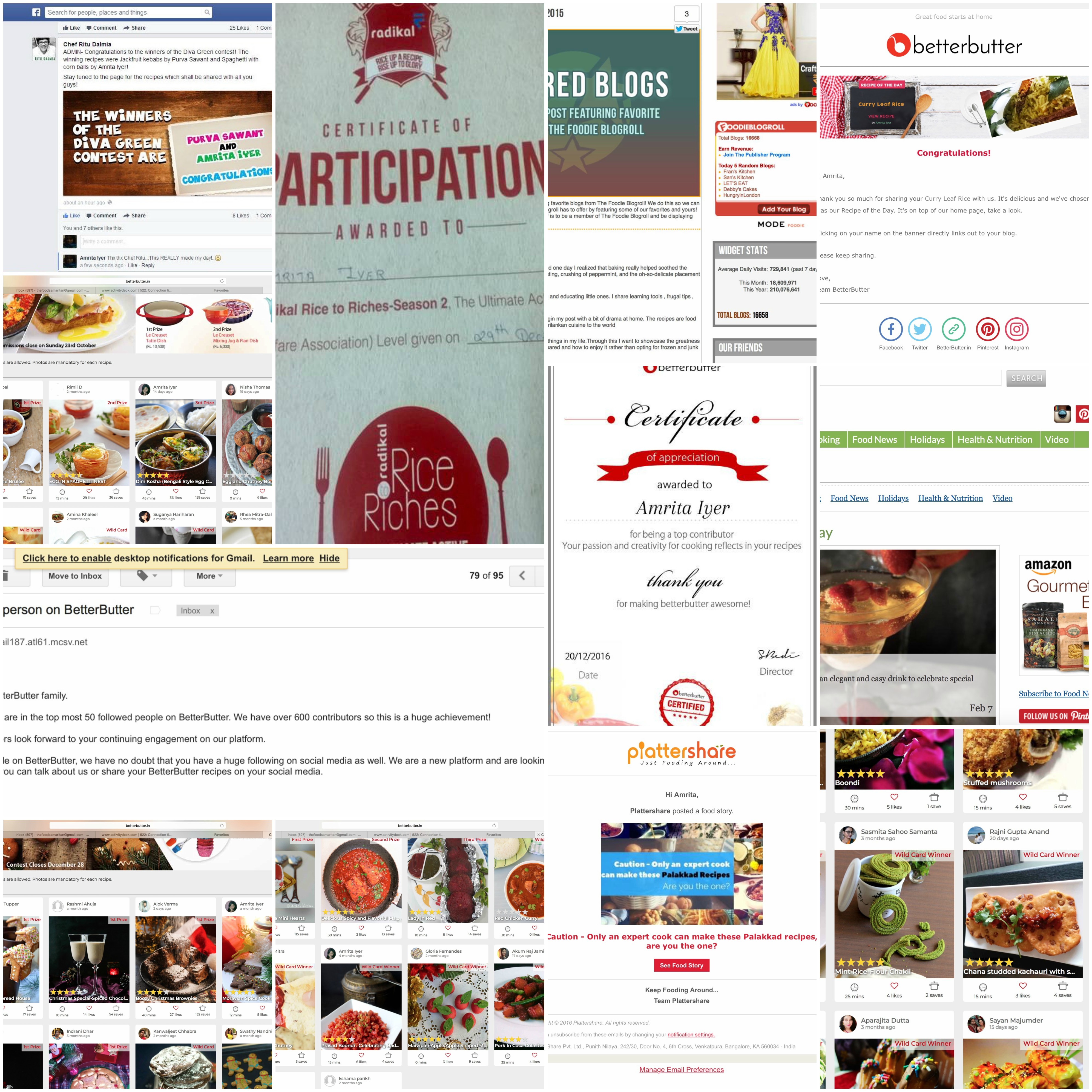







This looks and sounds absolutely delicious Amrita! YUM!